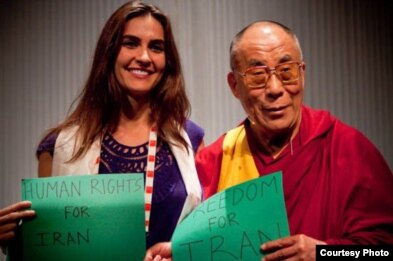Suomen Iranin-suurlähettiläs: Mielenosoitusten luonne muuttunut

Amatöörikuvaajan videossa näkyy, miten vihaiset mielenosoittajat hyökkäävät poliisiauton kimppuun Teheranissa 27. joulukuuta.
Kuva: Reuters-TV
Suomen Teheranin-suurlähettiläs Harri Salmi arvioi, että Iranin väkivaltaisemmiksi muuttuneiden mielenosoitusten tavoitteet ja luonne ovat muuttuneet. Salmi kuvaa ilmapiiriä maassa jännittyneeksi ja odottavaksi.
Salmi kertoo, että viimeksi kuluneen viikon aikana jännitys on selvästi leimahtunut mielenosoituksiksi, jotka ovat levinneet eri puolille pääkaupunkia Teherania.
- Ihmiset eivät tiedä, mitä tulee tapahtumaan, Salmi sanoo.
Mielenosoitusten jatkumisen syyt
Mielenosoitukset levisivät viikonlopun aikana myös useisiin muihin kaupunkeihin eri puolille maata. Salmi kertoo, että mielenosoitukset saivat uutta pontta vaikutusvaltaisen ja arvostetun suurajatollahin Hossein Ali Montazerin hautajaisista.
- Viranomaiset kielsivät kaikki Montazerin muistotilaisuudet, mutta ihmiset halusivat osoittaa mieltä hänen puolestaan vanhoillisten uskonoppineiden johtamaa hallitusta vastaan. Montazeri oli hallituksen kovasanainen arvostelija ja nautti suurta arvostusta kansan ja uudistusmielisten voimien keskuudessa, Salmi muistuttaa.
Hossein Ali Montazerista piti aikanaan tulla Iranin islamilaisen tasavallan perustajan, ajatolla Ruhollah Khomeinin seuraaja. Hänet kuitenkin syrjäytettiin, ja Khomeinin kuoltua vuonna 1989 Iranin korkeimman vallan haltijaksi nousi maan nykyinen johtaja, ajatollah Ali Khamenei.
- Kun virallinen Iran halusi hiljentää Montazerin muiston, se herätti kansassa myötätuntoa suurajatollahia kohtaan ja vahvisti mielialoja hallitusta vastaan. Tämä asetelma on nyt kiihtynyt väkivallan kierteeksi hallituksen ja opposition välillä, Salmi sanoo.
Mielenosoitusten luonne muuttunut
Alun perin oppositio vaati vilpilliseksi väitetyn presidentinvaalin tuloksen kumoamista. Virallisen vaalituloksen mukaan Mahmoud Ahmadinejad voitti kesäkuun äänestyksessä ylivoimaisesti haastajansa Mir-Hosein Musavin. Mielenosoitukset alkoivat ja Musavi nousi oppositioliikkeen johtoon.
Suurlähettiläs Harri Salmi arvioi, että mielenosoitusten luonne ja tavoitteet ovat viime viikkoina muuttuneet.
- Aivan selvästi mielenosoituksissa huudettujen iskulauseiden kärki on enemään ja enemmän kohdistunut hallituksen johtoon ja samalla myös koko islamilaisen tasavallan perustana olevaa järjestelmää vastaan, Salmi sanoo. Mielenosoittajien tavoite on hänen mukaansa "enemmän vapautta ja demokratiaa" Iraniin.
Maanantaina tiedot Teheranista kertoivat, että useiden oppositiojohtajien kuten entisen presidentin Mohammed Khatamin ja Mir-Hosein Musavin läheisiä avustajia sekä entinen ulkoministeri Ibrahim Yazdi oli pidätetty.
Suurlähettiläs Salmi muistuttaa, että opposition jäsenten pidätykset ja liberaalien lehtien sulkemiset ovat olleet käytössä pitkin syksyä.
- Nyt pidätykset näyttävät lähestyvän itse oppositiojohtajia. Teheranissa kysytäänkin, milloin on heidän vuoronsa tulla pidätetyiksi ja joutua syytetyiksi, uskalletaanko näin tehdä ja mitkä olisivat seuraukset, kertoo Salmi.
YLE Uutiset








